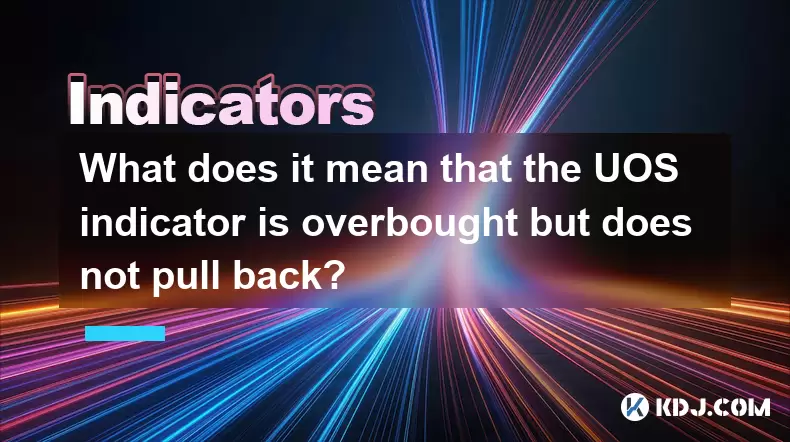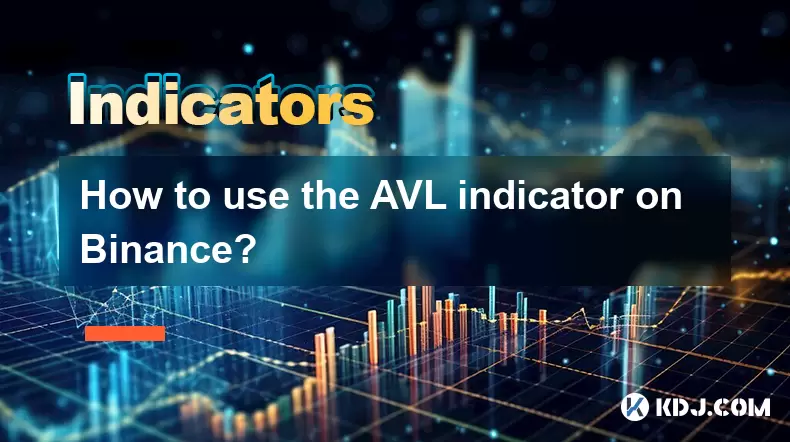-
 Bitcoin
Bitcoin $117700
-0.03% -
 Ethereum
Ethereum $3805
0.49% -
 XRP
XRP $3.098
-1.00% -
 Tether USDt
Tether USDt $1.000
0.03% -
 BNB
BNB $792.8
-1.72% -
 Solana
Solana $177.9
-1.95% -
 USDC
USDC $1.000
0.02% -
 Dogecoin
Dogecoin $0.2202
-1.55% -
 TRON
TRON $0.3278
-2.92% -
 Cardano
Cardano $0.7641
-2.43% -
 Hyperliquid
Hyperliquid $42.21
-2.68% -
 Sui
Sui $3.758
-1.58% -
 Stellar
Stellar $0.4080
-3.21% -
 Chainlink
Chainlink $17.75
-0.33% -
 Bitcoin Cash
Bitcoin Cash $591.8
4.96% -
 Hedera
Hedera $0.2561
-3.09% -
 Avalanche
Avalanche $23.34
-4.24% -
 Litecoin
Litecoin $110.7
1.96% -
 UNUS SED LEO
UNUS SED LEO $8.956
-0.01% -
 Toncoin
Toncoin $3.410
0.79% -
 Ethena USDe
Ethena USDe $1.001
0.03% -
 Shiba Inu
Shiba Inu $0.00001288
-1.82% -
 Uniswap
Uniswap $10.07
-2.06% -
 Polkadot
Polkadot $3.807
-2.27% -
 Monero
Monero $308.2
-2.15% -
 Dai
Dai $1.000
0.03% -
 Bitget Token
Bitget Token $4.521
-0.30% -
 Pepe
Pepe $0.00001134
-1.52% -
 Cronos
Cronos $0.1457
0.65% -
 Aave
Aave $274.9
-2.47%
What does it mean that the UOS indicator is overbought but does not pull back?
When the UOS indicator is overbought in crypto trading, it signals strong buying pressure but doesn't always result in a price pullback due to sustained demand or market sentiment.
Jun 20, 2025 at 06:43 pm

Understanding the UOS Indicator and Its Significance in Cryptocurrency Trading
The Ultimate Oscillator (UOS) is a technical analysis tool that combines multiple timeframes to measure momentum. In the context of cryptocurrency trading, where price movements can be highly volatile, understanding signals like overbought conditions becomes crucial. The UOS indicator typically ranges from 0 to 100, with readings above 70 considered overbought, and below 30 considered oversold.
In many cases, when an asset's UOS enters the overbought zone, traders expect a potential pullback or reversal as the market may be overextended. However, there are instances where the UOS remains overbought for extended periods without any significant correction in price. This phenomenon raises questions about the reliability of traditional oscillator signals in crypto markets.
What Does It Mean When the UOS Is Overbought?
When the UOS indicator crosses above 70, it suggests that buying pressure has been strong across short-, medium-, and long-term timeframes. In conventional technical analysis, this would imply that the asset might be overvalued and due for a retracement. Traders often use this as a signal to consider selling or taking profits.
However, in cryptocurrency markets, especially during strong uptrends or bull runs, assets can remain overbought for prolonged periods. This occurs because of sustained demand, FOMO (fear of missing out), or institutional inflows that continue pushing prices higher despite traditional indicators signaling caution.
Why Doesn't the Price Pull Back Even When UOS Is Overbought?
There are several reasons why the price might not pull back even when the UOS is overbought:
- Strong Market Sentiment: If the overall sentiment around a cryptocurrency is overwhelmingly bullish, buyers may continue to enter the market regardless of technical overextension.
- Low Liquidity in Order Books: In some cases, limited sell orders on exchanges prevent the price from correcting sharply.
- Whale Accumulation: Large holders or institutions may be accumulating coins, absorbing available supply and preventing a pullback.
- Reduced Volatility: During certain phases, volatility decreases, which can delay corrections even if indicators suggest they should occur.
These factors illustrate how crypto markets can deviate from traditional financial behavior, making it essential for traders to adapt their strategies accordingly.
How Can You Confirm Whether a Pullback Will Happen?
To assess whether a pullback is likely, traders can look at additional tools and market behaviors:
- Volume Analysis: A sudden drop in volume while UOS remains overbought may indicate weakening momentum.
- Divergence Detection: If the price makes new highs but the UOS fails to confirm with a new high, it could signal an impending reversal.
- Order Book Depth: Checking order books for large sell walls can provide clues about resistance levels and potential selling pressure.
- Market News and Events: External factors such as regulatory updates or major exchange listings can influence whether a pullback occurs.
Combining these tools with the UOS reading gives traders a more comprehensive view of market dynamics.
What Strategies Can Be Used When UOS Is Overbought But No Pullback Occurs?
If the UOS is overbought but no pullback happens, traders have several options depending on their risk tolerance and strategy:
- Ride the Trend: Some traders choose to hold or even add to positions if other momentum indicators remain bullish.
- Set Dynamic Stop Losses: Using trailing stops helps protect gains while allowing room for further upside.
- Monitor for Exhaustion Patterns: Candlestick patterns like long upper wicks or spinning tops may indicate weakening buying pressure.
- Use Other Indicators for Confirmation: Tools like RSI or MACD can help cross-verify the strength of the trend.
It’s important to remember that no single indicator should dictate trading decisions. A multi-indicator approach increases the likelihood of making informed trades.
Common Misconceptions About Overbought Signals in Crypto Markets
Many traders mistakenly believe that an overbought UOS always leads to a pullback. This assumption stems from traditional markets where mean reversion is more common. However, crypto markets behave differently due to:
- High Leverage Usage: Futures markets allow traders to take leveraged positions, which can prolong trends beyond what fundamental or technical signals suggest.
- 24/7 Trading: Unlike stock markets, crypto never closes, meaning momentum can build continuously without pauses.
- Speculative Nature: Retail participation and hype cycles can keep prices elevated even when technical indicators warn of overextension.
Recognizing these differences is key to interpreting the UOS correctly in crypto environments.
Frequently Asked Questions
Q: Can I solely rely on the UOS indicator for trading decisions?
No, the UOS indicator should be used in conjunction with other tools such as moving averages, volume analysis, and support/resistance levels to increase accuracy and reduce false signals.
Q: What timeframes does the UOS typically use in crypto trading?
The standard settings for the UOS indicator are usually set to 7, 14, and 28 periods. These values capture short-, medium-, and long-term momentum, which can be adjusted based on the trader's strategy and the specific cryptocurrency being analyzed.
Q: How does the UOS differ from RSI in crypto markets?
While both are oscillators, the UOS considers multiple timeframes, whereas the RSI focuses on a single timeframe. This makes the UOS potentially more reliable in identifying true overbought or oversold conditions in fast-moving crypto markets.
Q: Should I exit my position immediately if UOS shows overbought?
Not necessarily. Exiting based solely on an overbought UOS reading can lead to missed gains during strong trends. Instead, monitor for divergence, exhaustion patterns, or confirmation from other indicators before making a decision.
Disclaimer:info@kdj.com
The information provided is not trading advice. kdj.com does not assume any responsibility for any investments made based on the information provided in this article. Cryptocurrencies are highly volatile and it is highly recommended that you invest with caution after thorough research!
If you believe that the content used on this website infringes your copyright, please contact us immediately (info@kdj.com) and we will delete it promptly.
- Cold Wallet vs. MetaMask: A Crypto Wallet Revolution?
- 2025-07-31 10:30:57
- Bitcoin Casinos in 2025: Instant Payouts and Welcome Bonuses
- 2025-07-31 10:50:33
- Meme Coins in 2025: Token Burns and the Quest for Moonshots
- 2025-07-31 10:50:33
- Unlocking Value: A Deep Dive into Random Year 1 oz Krugerrand Gold Coins
- 2025-07-31 10:57:21
- LYNO Token Presale: AI Arbitrage Revolution in DeFi
- 2025-07-31 05:11:11
- Pepecoin Successors: Can These Cryptocurrencies Make You a Millionaire?
- 2025-07-31 05:50:12
Related knowledge

How to use the AVL indicator to confirm a trend?
Jul 31,2025 at 10:25am
Understanding the AVL Indicator and Its ComponentsThe AVL indicator, also known as the Accumulation Volume Line, is a technical analysis tool that com...

How does volume affect the AVL indicator?
Jul 31,2025 at 11:23am
Understanding the AVL Indicator and Its Core ComponentsThe AVL indicator, short for Accumulation Volume Line, is a technical analysis tool used primar...

How to use the AVL indicator with MACD for better signals?
Jul 31,2025 at 09:22am
Understanding the AVL Indicator and Its Role in Cryptocurrency TradingThe AVL indicator, also known as the Accumulation Volume Line, is a volume-based...

How to identify sell signals with the AVL indicator?
Jul 31,2025 at 07:09am
Understanding the AVL Indicator and Its Core ComponentsThe AVL indicator, also known as the Accumulation Volume Line, is a volume-based technical anal...

How to use the AVL indicator on Binance?
Jul 31,2025 at 12:22pm
Understanding the AVL Indicator and Its Relevance on BinanceThe AVL indicator, also known as the Accumulation Volume Line, is a technical analysis too...

What are the best settings for the AVL indicator?
Jul 31,2025 at 10:04am
Understanding the AVL Indicator and Its PurposeThe AVL indicator, also known as the Accumulation Volume Line, is a technical analysis tool used in the...

How to use the AVL indicator to confirm a trend?
Jul 31,2025 at 10:25am
Understanding the AVL Indicator and Its ComponentsThe AVL indicator, also known as the Accumulation Volume Line, is a technical analysis tool that com...

How does volume affect the AVL indicator?
Jul 31,2025 at 11:23am
Understanding the AVL Indicator and Its Core ComponentsThe AVL indicator, short for Accumulation Volume Line, is a technical analysis tool used primar...

How to use the AVL indicator with MACD for better signals?
Jul 31,2025 at 09:22am
Understanding the AVL Indicator and Its Role in Cryptocurrency TradingThe AVL indicator, also known as the Accumulation Volume Line, is a volume-based...

How to identify sell signals with the AVL indicator?
Jul 31,2025 at 07:09am
Understanding the AVL Indicator and Its Core ComponentsThe AVL indicator, also known as the Accumulation Volume Line, is a volume-based technical anal...

How to use the AVL indicator on Binance?
Jul 31,2025 at 12:22pm
Understanding the AVL Indicator and Its Relevance on BinanceThe AVL indicator, also known as the Accumulation Volume Line, is a technical analysis too...

What are the best settings for the AVL indicator?
Jul 31,2025 at 10:04am
Understanding the AVL Indicator and Its PurposeThe AVL indicator, also known as the Accumulation Volume Line, is a technical analysis tool used in the...
See all articles

























































































